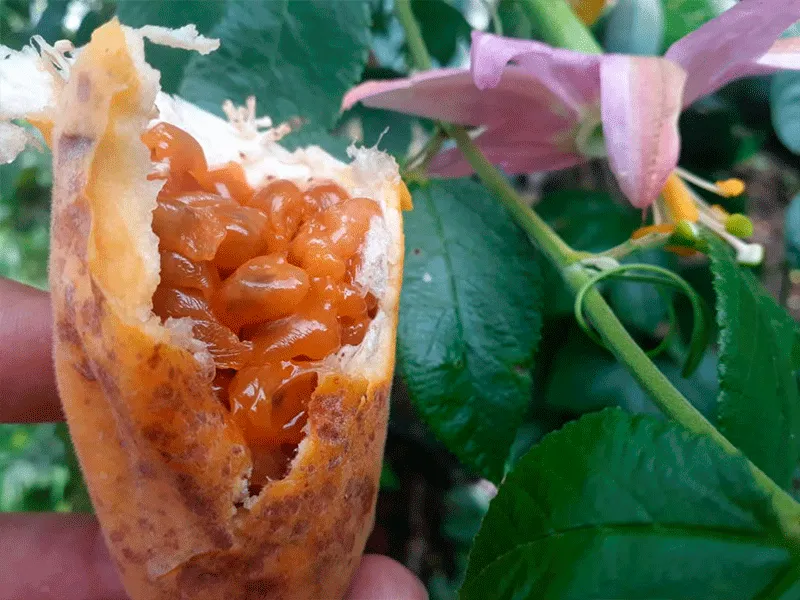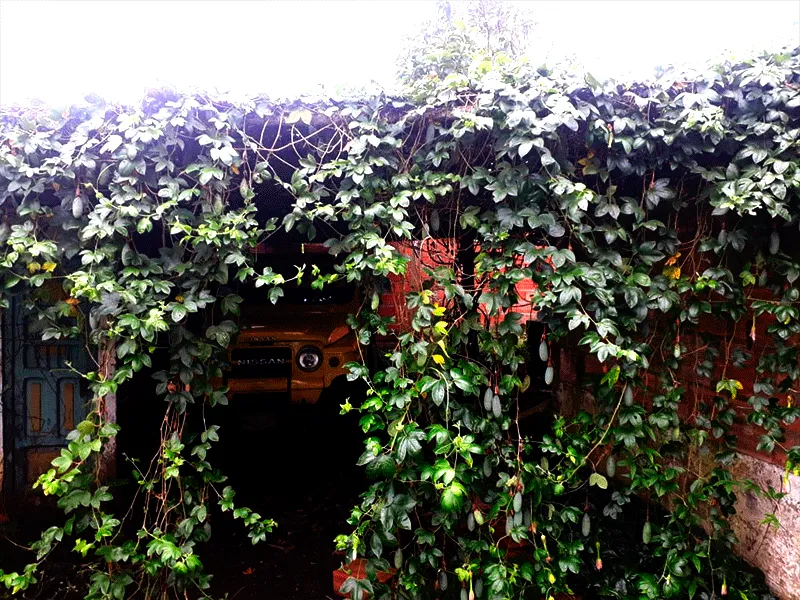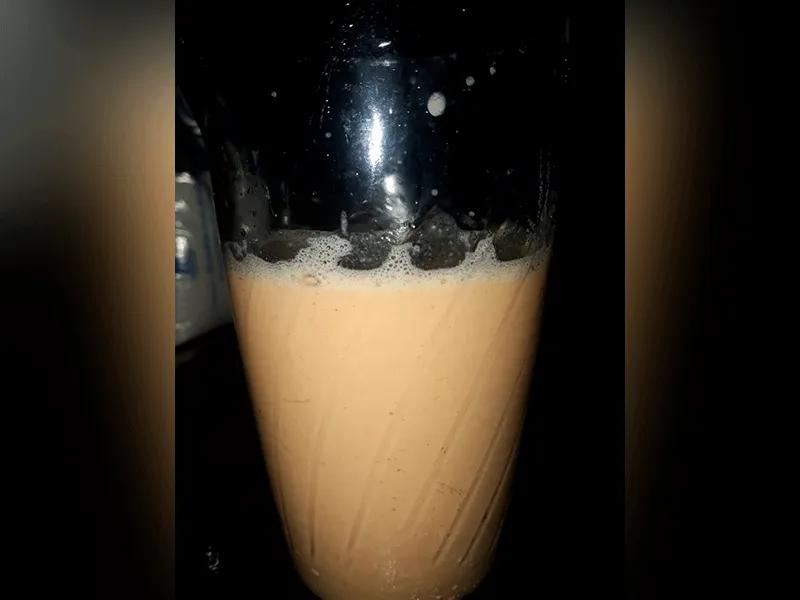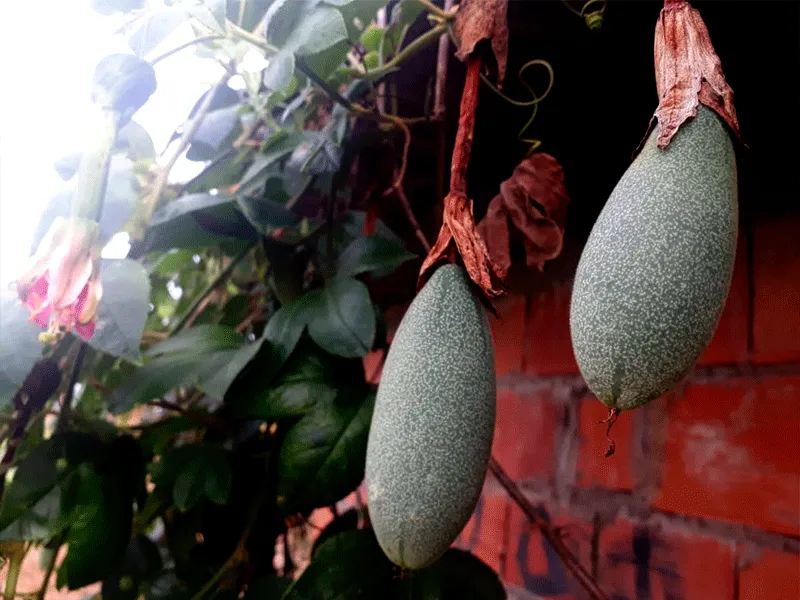English
This week I had the opportunity to go to the countryside. There are many wonders that nature gives us there, so this time I will focus on talking about the curuba.

Ripe fruit next to the curubas plant. The flowers are showy pink
This climbing plant, which belongs to the parchita (Passiflora) family, produces delicious green berries that turn yellow when ripe. Inside, they are composed of black seeds covered with the fleshy, edible part, which is characterized by its orange color.
The curuba fruit contains vitamins A, C and ribaflavin, as well as minerals such as potassium, phosphorus, magnesium, iron and sodium, according to studies on its nutritional and antioxidant characteristics.

The curubas plant belongs to the Passiflora family, as does the parchita.
Curuba can be consumed as a meringue. Here I will show you how to prepare this nutritious drink.

It is recommended not to liquefy too much to avoid crushing the seeds.
How to prepare curuba meringue?
Ingredients:
- 6 curubas
- 1 liter of liquid milk
- 1/2 liter of ice water
- Sugar to taste
Preparation:
Wash the curubas and with your hands separate the pulp from the rind of the fruit. (The seeds are covered by the pulp).
Put the curubas in the blender with part of the milk. Blend at normal speed for one minute. (It is recommended not to blend too much to avoid crushing the seeds).
Strain the mixture into a pitcher or bowl.
Blend the sugar with a little milk and add to the contents of the pitcher. Mix well together with the ice water. (If sugar is missing you can add a little more).
Serve chilled and enjoy a nutritious curubas merengada.

This plant gives harvest in all seasons of the year.
I hope this post is useful and that you can share this delicious drink with your family.
Original text in Spanish
Translated to English with the online translator Deepl
Photography: source own
lighting correction of images: Photoshop
Español
Esta semana tuve la oportunidad de ir al campo. Son muchas las maravillas que allí nos da la naturaleza, por ello, en esta ocasión me centraré en hablar de la curuba.

Fruta madura junto a la planta de curubas. Las flores son llamativas de color rosa
Esta planta trepadora, que pertenece a la familia de la parchita (Passiflora) produce unas deliciosas bayas verdes que se vuelven amarillas al madurar. En su interior están compuestas de semillas negras recubiertas de la parte carnosa y comestible, que se caracteriza por su color naranja.
La fruta de la curuba contiene vitaminas A, C y ribaflavina, así como minerales entre los cuales se destacan el potasio, fósforo, magnesio, hierro y sodio, según estudios sobre sus características nutricionales y antioxidantes.

La planta de curubas pertenece a la familia Passiflora, al igual que la parchita
La curuba puede ser consumida a manera merengada. Aquí te mostraré cómo preparar esta nutritiva bebida.

Se recomienda no licuar demasiado para evitar que las semillas se trituren
¿Cómo preparar merengada de curuba?
Ingredientes:
- 6 curubas
- 1 litro de leche líquida
- 1/2 litro de agua helada
- Azúcar al gusto
Preparación:
Lava las curubas y con las manos separa la pulpa de la corteza de la fruta. (Las semillas están recubiertas por la pulpa)
Pon las curubas en la licuadora con parte de la leche. Licúa a velocidad normal durante un minuto. (Se recomienda no licuar demasiado para evitar que las semillas se trituren).
Cuele la mezcla en una jarra o recipiente.
Licúe el azúcar con un poco de leche y agrega al contenido de la jarra. Mezcla bien junto con el agua helada. (Si falta azúcar puedes agregar un poco más)
Sirve bien fría y disfruta de una nutritiva merengada de curubas.

Esta planta da cosecha en todas las temporadas del año
Espero que este post sea de utilidad y que puedas compartir en familia esta deliciosa bebida.
Texto original en español
Traducido al inglés con el traductor en línea Deepl
Fotografía: fuente propia
Corrección de iluminación de imágenes: Photoshop








